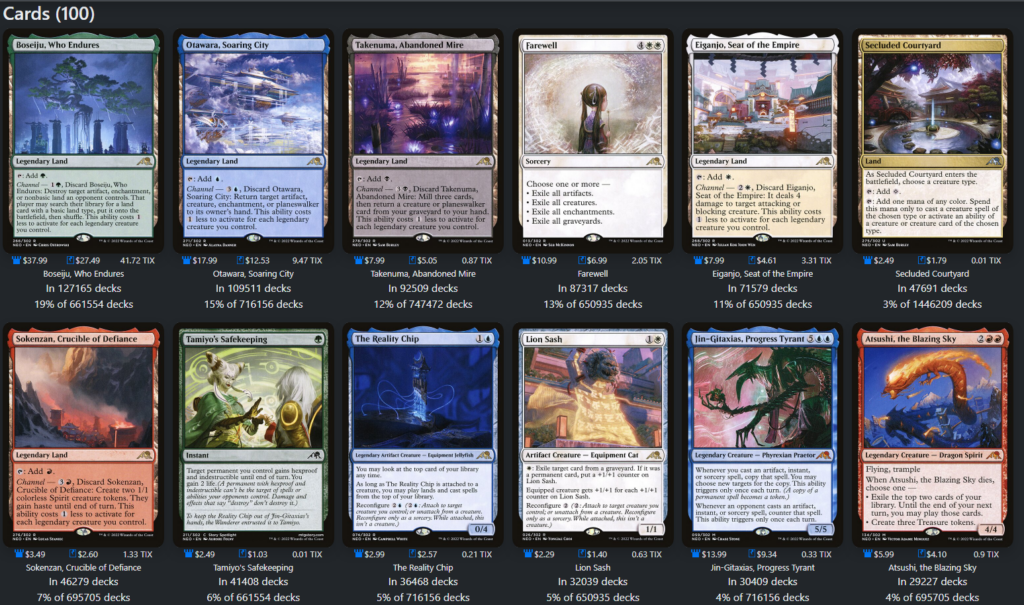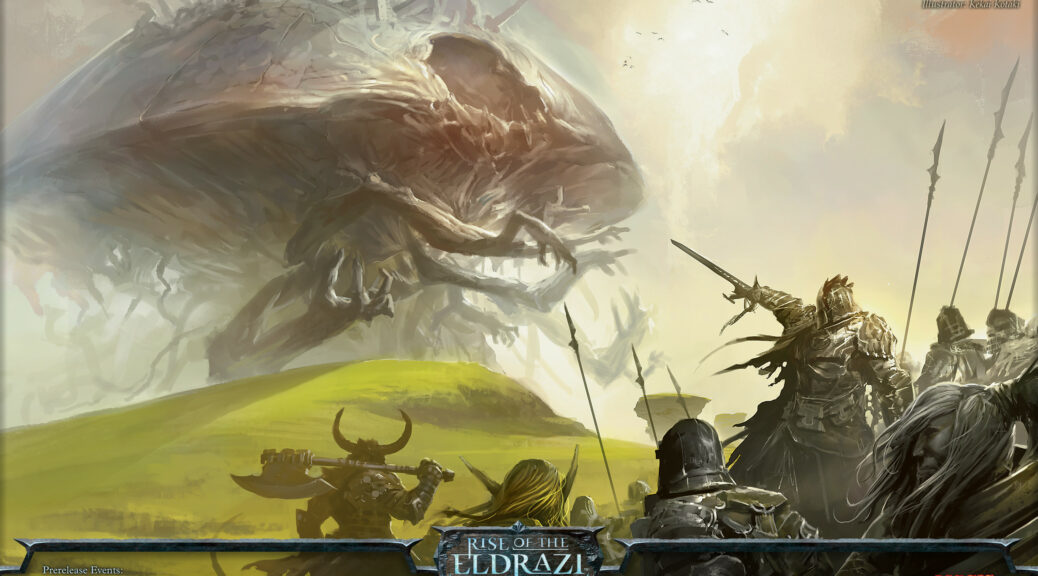Readers!
Using EDHREC or, if you want to do it the hard way, I guess, other sources, it’s easy to see which cards are getting played in Commander and which aren’t. Look at a set and see what’s getting played with. That used to be enough information for us. Barring reprints, cards were printed the same amount, roughly, foils were flat and still special and older cards went up when new cards made them matter again. The problem is, the more they wanted us to buy, the more the cards had to be good. They need to keep pushing the gas, which means more good cards per set, more sets, which means more cards you need to play. Do you build a new deck or take cards out of the 3 week old deck you’ve played twice to make room for the new cards that made your old ones obsolete? And if a card is too good to be made obsolete, do you take comfort in that and invest or do you worry about what the card that makes people stop playing Dockside Extortionist is going to look like? I personally worry about how just getting played a lot doesn’t matter, and also doesn’t seem to be useful for figuring out where prices will go. Let’s look at a few cards, shall we?
Forgive my hasty alignment using paint of all programs, I don’t want to take the time to fix it because I wanted to make a point. Both of these cards are played a lot in new Elesh Norn decks, and in the format in general. One costs more than the other despite being newer. Does that mean Terramancer is played more across the format?


No, in fact. There are lots of versions of Welcoming Vampire, and Deep Gnome Terramancer was in a set that has a lot of really good cards. Do I expect Terramancer to hit $10 when Welcoming Vampire is played more and hasn’t come close? How many reprints and variants and promos does it take to drag a card down to being a buck less than a card played half as much? As there other factors at play here?
The real question here is that whether Deep Gnome Terramancer is a good pickup at under $5. We’d love for it to hit at least $10 if we’re outing at retail prices, much more if we want to clear our shipping costs buylisting them. Is this sort of spec dead? Moreover, is being a format staple even good enough anymore?
We used to be impressed by a card being in 10,000 decks as far back as EDHREC measured, and one of the reasons I cautioned against arbitrary levels like that was that the number would have to constantly change and no one would know where it should be. At this point, is 22k enough? Why can’t 41k and a year of time offset multiple promo versions? What trajectory is Terramancer even on?

If 4 is the floor on this card and it’s already rebounding, will it pull farther away from Vampire despite being played less? What are we to make of these contradictions? Worse, is being in 40 or even 50k decks enough anymore? With all of the new keywords comes enablers and that means cards get more and more specialized until the decks build themselves. We used to be at a sweet spot where staples were an index and individual cards being buoyed by new releases meant some narrow cards would get a new look and that scrutiny would lead to buying and price increases. Now, the cards are so specialized that people are basically leaving the precons as-is a card being in a 40K deck matters more than being in 40k decks, you know?

The neon Hidetsugu and the promise of extended art foil Boseiju and foils of the EDH precon cards continued the unsustainable trend of collector boosters being opened until the prices were all meaningless. Is The Reality Chip a buy at $3? More than that, are we OK with a game where the 9th most played card in the most popular format is $2.50? Let me rephrase that, of course I want a game like that, but is it worth doing Mtg Finance the way I have done Mtg Finance the last decade if the demand can’t ever catch supply?
The days of snagging like 100 cheap copies of something you think is going up on TCG Player seem over. Mtg Finance has always been “adapt or die” and after taking a month off to grapple with how I felt about my current approach to Mtg Finance, I think I am ready to adapt. To that end, I’ll be spending the next few months developing and reporting on new techniques and pointing out times where my old approach pays off.
It wasn’t that Kibo, Uktabi Prince couldn’t move prices, it’s that Ravenous Baboons were the only card the really went anywhere. The price immediately went back down as there wasn’t much real demand since the card doesn’t especially synergize with Kibo and it was more likely just an old Monkey people remembered because they’ve been playing as long as me.
My current method, which we’re updating, is still useful for paying attention to movement, usage, relative ubiquity. Staring at the Elesh Norn, Mother of Machines page on EDHREC doesn’t feel like it used to where specs would leap off of the page at me. I just see the same mono-White Blink deck stuff that I said would go up based on another White Blink commander but didn’t. Cards used to be cards, but now the product matters a lot. Limited releases like Baldur’s Gate give us stronger signals, faster. Look what is in 40k decks and has been out exactly as long as Deep Gnome.

Moving forward, I’ll be targeting older cards for specs and only straying into newer card territory when it makes sense to do so, or if it’s in a dynamite set like Baldur’s Gate. I think Baldur’s Gate has more to give us, so I’ll be diving directly into that set next week. Until then, I usually include specs and this week I mostly told you what not to buy, so here are some presented without explanation.




Until next time!
